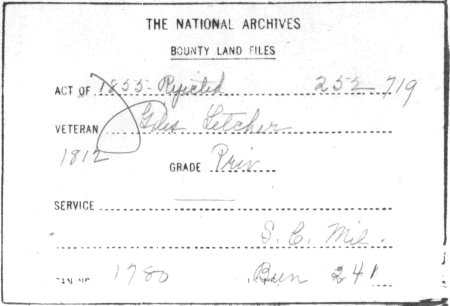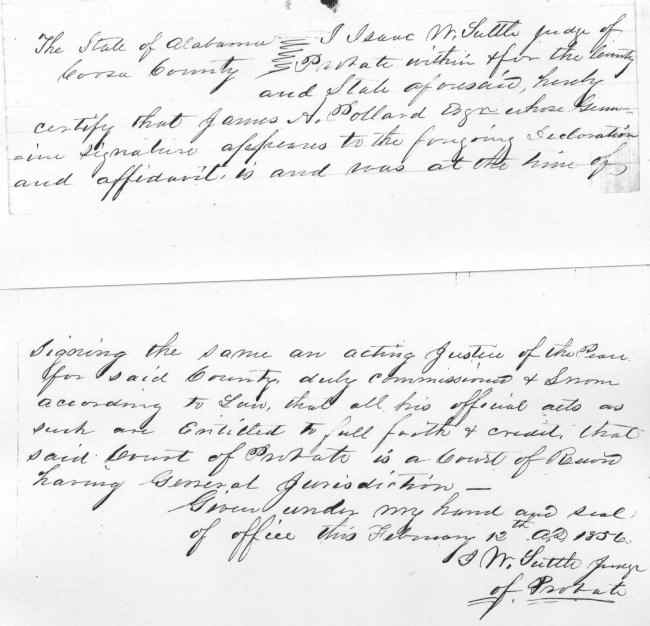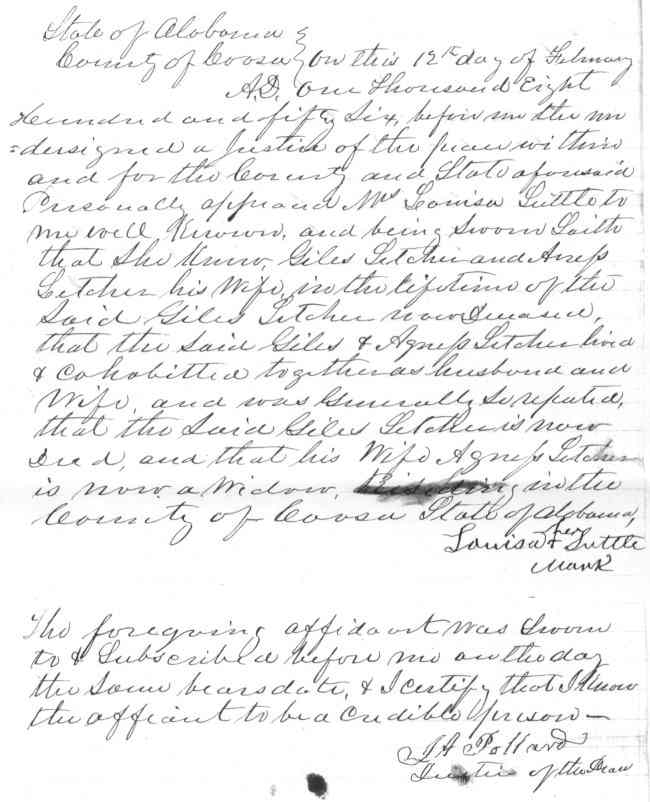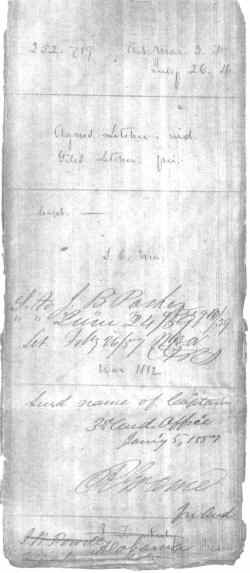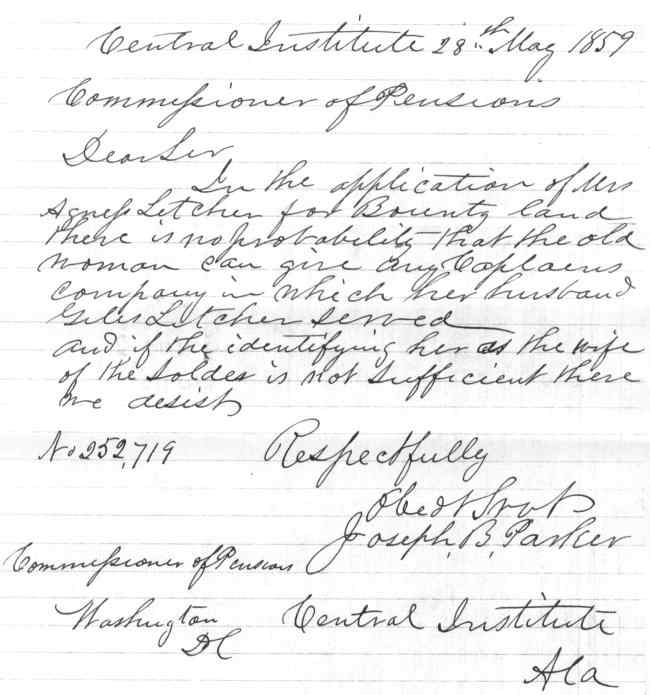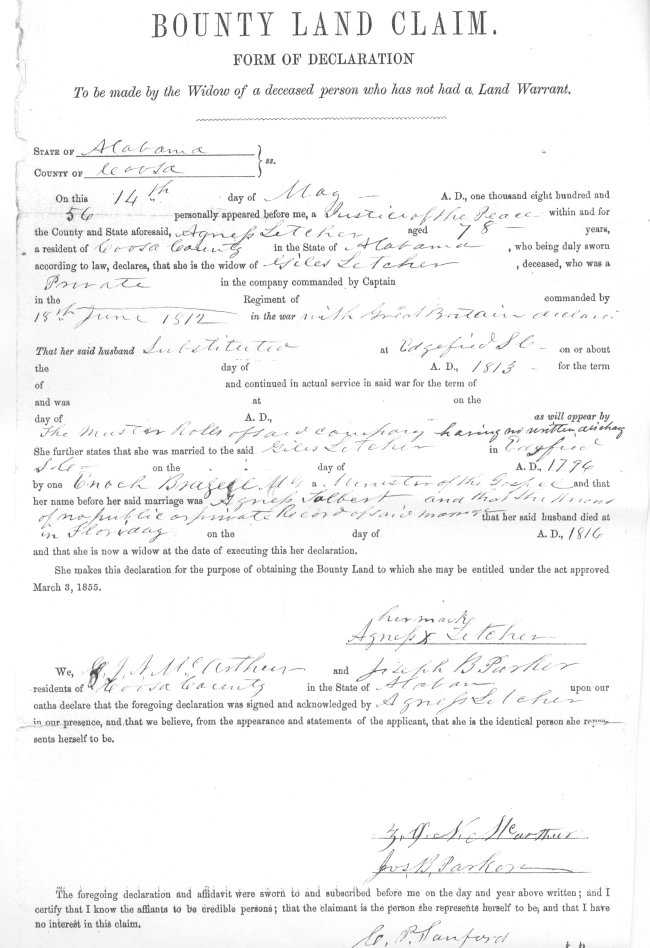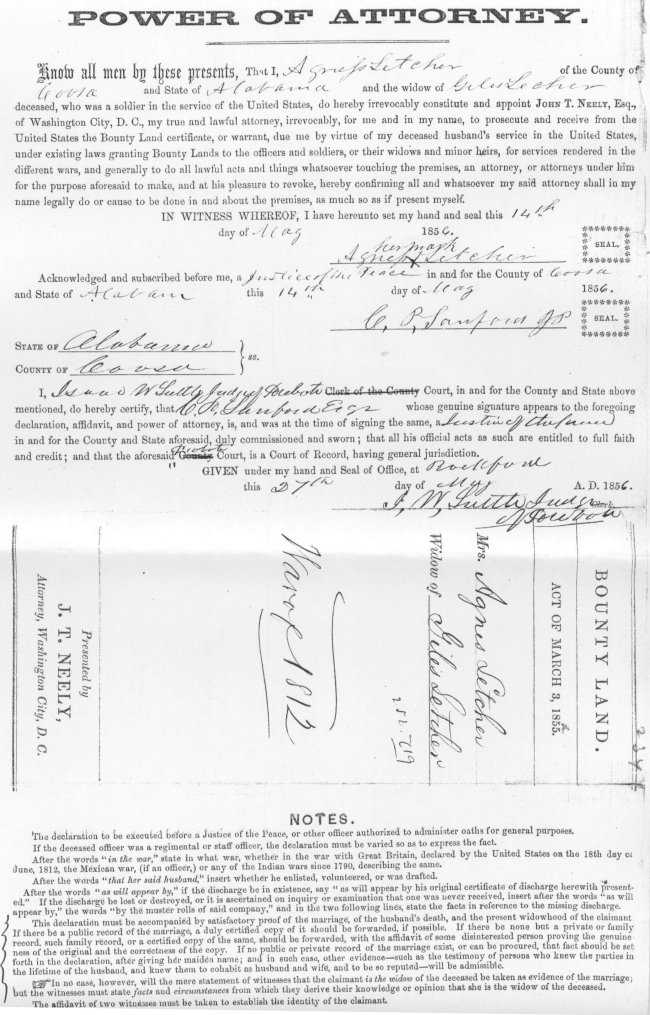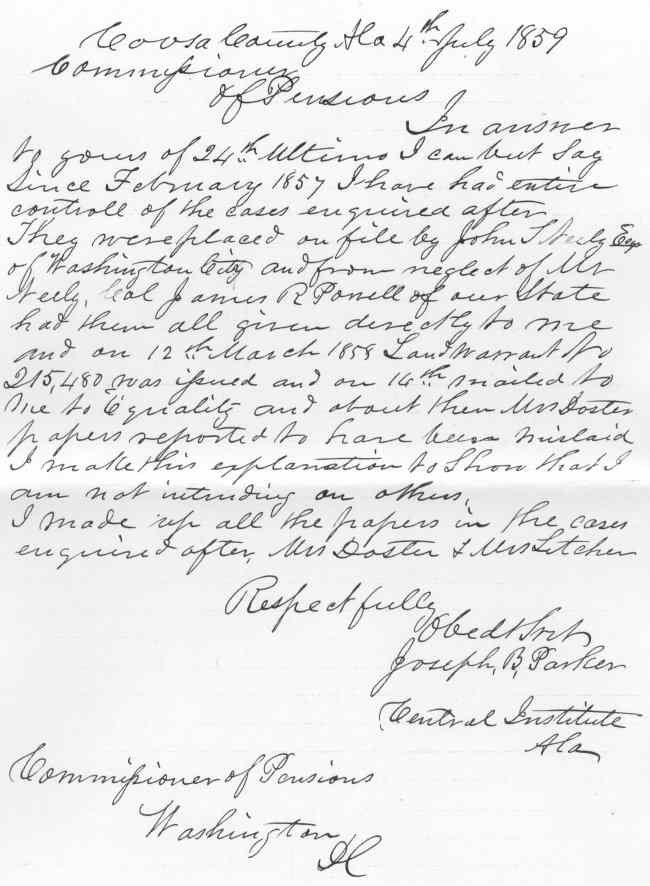SHORT
EXPLANATION:
Provided by:
Bob Campbell
Bounty Land Warrants for Military
Service in the War of 1812
After the War of 1812, Congress
enacted legislation to reward military service by entitling veterans to
claim land in the northwest and western territories. This so-called
"bounty land" was not granted outright to the veterans, but
was instead awarded to them through a multi-step process beginning with
a bounty land warrant.
Bounty land warrants weren't
automatically issued to every veteran who served. The veteran first had
to apply for a warrant, and then, if the warrant was granted, he could
use the warrant to apply for a land patent. The land patent is the
document which granted him ownership of the land.
Basically, the warrant is a piece of
paper which states that, based on his service, the veteran is entitled
to X number of acres in one of the bounty land districts set up for
veterans of the War of 1812. These land districts were located on public
domain lands in Arkansas, Illinois and Missouri.
The warrants, themselves, were not
delivered to the veterans; all the veteran actually received was a
notification telling him that Warrant #XXX had been issued in his name
and was on file in the General Land Office.
Prior to 1842, if a veteran chose to
redeem his warrant for land, he was required to choose land in one of
the three states listed above. (After 1842, he could redeem his warrant
for public lands in other states.)
Warrants could be assigned or sold to
other individuals.
Benjamin Hibbard, an American public
lands historian, believed that the government chose to set the land
districts up in these frontier areas because they thought it would be
really nifty to have a few thousand battle-hardened war veterans &
their families acting as buffers between established settlements and the
Native American population. For good or for ill, the veterans were too
smart to fall for that one, and most chose to sell their patents to land
speculators. So keep in mind that, even if your ancestor applied for a
patent, he may never have set foot on his land.
The Bounty Land Warrant File
A veteran who decided to redeem his
warrant was issued a patent for the land itself, and a "Bounty Land
Warrant File" was created in the General Land Office. This file
contains the surrendered warrant, a letter of assignment (if he assigned
his interest to another party) and any other documents pertaining to the
transaction. The warrant itself should include the name of the veteran,
his rank on discharge, his branch of service (including company, etc.),
and the date the warrant was issued. It may also include the date
the land was located and a description of the land.
If he obtained bounty land, you should
be able to find your ancestor in National Archives Microfilm Series M848
(14 rolls), War of 1812 Military Bounty Land Warrants, 1815-1858.
This series includes an index to patentees in Missouri & Arkansas, a
partial index for Illinois, and an index for patentees under the 1842
act (the one that allowed them to choose lands in areas other than MO,
AR & IL). If you find that he patented his land, and you want more
information than is contained on the microfilm, you may be able to
obtain it by writing the National Archives and having them search the
General Land Office abstracts of military bounty land warrant locations.
LONG EXPLANATION:
The term bounty land is
somewhat self-explanatory. Tracts of land were given outright by the
states, and later by the federal government as partial compensation (or
"bounty") for service in times of military conflict. Such
bounty was also occasionally used by the government to incent men to
serve in war or conflicts. Bounty land warrants were issued from the
colonial period until 1858, when the program was discontinued, and five
years later, in 1863, the rights to locate and take possession of bounty
lands ceased.
There were a number of different acts, over an 80 year period, which
provided for the issuance of bounty land warrants. One of the earliest
was the Congressional Act of 16 September 1776, which was an inducement
to join the Continental Army, and which provided from 100 to 500 acres,
and was dependent on the rank attained while in the Army. In later wars,
other acts provided for different types of warrants for enlisted men and
officers.
The great bulk of early bounty land at the time of the Revolution was in
Virginia, as it existed in colonial times. Since Virginia provided the
great bulk of fighting men in the Revolution, the first bounty lands
were to be located between the Mississippi, Ohio and Green Rivers in
what is now Kentucky. However, this area did not provide enough land,
and the Virginia Military Tract was established, which was in what is
now the state of Ohio. Continental Army soldiers from Virginia were the
only group allowed to settle in the Ohio area, while state soldiers were
to use the lands in Kentucky.
We must remember that bounty lands were given by both the state and
federal governments. As might be expected, state bounty lands were
almost always within the state lands governed by that state, while
federal bounty lands were in specified districts and some federal land
states. The Congressional Military Tract was established in 1796 in
Ohio, and was set up in five-square-mile townships, rather than the
usual six mile arrangement. A quarter-township(4000 acres) was the
minimum that could be purchased or "redeemed". Federal bounty
land warrants were normally for only 160 acres, however, which worked a
hardship for individual claimants, causing them to have to band together
as groups in order to obtain such high acreage. By 1800, parcels holding
as little as 100 acres were being offered.
The War of 1812 saw the bounty land process offered again as an
inducement to bring men into the military. Congress created three new
military districts to handle the future redemptions of new soldiers. One
was in Illinois, one in Michigan and one in present-day Arkansas(then
Louisiana). However, lands in Missouri were later substituted for those
in Michigan, due to the undesirable nature of the land in Michigan that
had been set aside for this purpose. Other later acts of Congress, until
1855, continued to address the needs of soldiers wishing to redeem their
bounty land warrants and efforts continued to try to provide suitable
land area for these soldiers.
What records are available to the genealogist who is trying to determine
if an ancestor received a bounty land warrant, and if so, what might be
found in the records? The most comprehensive and complete record of such
warrants is contained in the National Archives in Record Group 15, Federal
Bounty Land Applications. The records contained in this group range
in time from the Revolution to the year 1917. Pension files, as well as
bounty land records, are contained in this group. Bounty land
applications for the Revolution, the War of 1812, and the Mexican War
are in this group, and there are some other case files covering the
period 1814-1856. A tragic fire some years ago destroyed thousands of
bounty land warrant application for the years from 1789 to 1800. If your
ancestor applied in this period for bounty land, the original documents
may be lost, although some abstract information still exists on these
earliest applications. There are also registers for bounty land warrants
and for claims which run up until 1912. Although the ability to claim
bounty land legally was stopped in 1863, there were civil suits and
other litigation which caused some lands to be granted as late as 1912.
Other important research references include the Index of
Revolutionary War Pension Applications in the National Archives,
which was prepared by the National Genealogical Society, as well as the
very useful and popular Genealogical Abstracts of Revolutionary War
Pension Files by Virgil White.
When looking for state bounty land warrants associated with the State of
Virginia (where, as noted earlier, the greatest bulk of these will be
found), the genealogist should make use of Record Group 49 in the
National Archives, which has about 16 different components contained
within it, such as the warrants issued under each act, treasury
certificates, exchange certificates, scrip records, and others. The term
"scrip" basically means the issuance of paper
"scrip" certificates that could be used in any land office,
and were exchanged for Virginia military bounty land warrants.
Another valuable reference work is the Federal Land Series by
Clifford Neal Smith. There are also numerous compilations that are now
available that list claimants by land office. There was a land office
established for each federal district, and, as the population grew, the
districts were subdivided and more land offices were established to
handle the overflow.
It is interesting note that, insofar as Revolutionary War bounty land
claims are concerned, the majority of these were redeemed, except for
Ohio, in Iowa, followed by Wisconsin. When searching for bounty land in
Ohio, the Index for Federal Land Entries, circa 1802-1849,
published by the Ohio Historical Society is often useful, although the
Symmes Purchase, the Connecticut Western Reserve and the Firelands are
not included.
In sum, the business of bounty land became a very large enterprise in
the United States for nearly a century. Although warrants could be
assigned by the original applicants, the original applicant was required
to apply for the warrant before assignment could occur. There were firms
established for the sole purpose of handling bounty land warrants for
applicants.
The genealogist should also be aware that there is some bounty land
warrant information available in the form of Canadian Refugee Warrants
and Canadian Volunteer Warrants, which cover those Canadians who were
"refugees" from Canada and assisted the American efforts
during the Revolution, and those Canadian volunteers who served during
the War of 1812. These records are held by the National Archives. Of the
two types, the Volunteer Warrants generally provide more information.
For more detail on Bounty Grants
click on the following links:
http://www.ultranet.com/~deeds/bounty.htm
|
